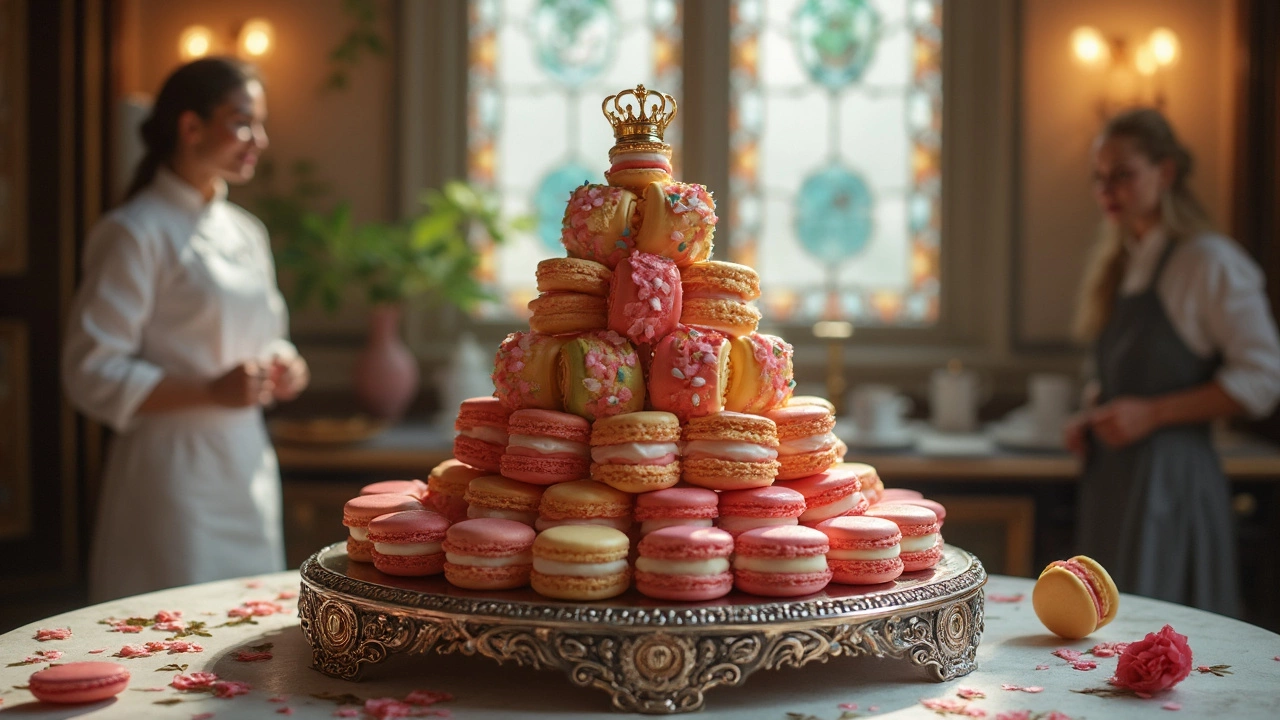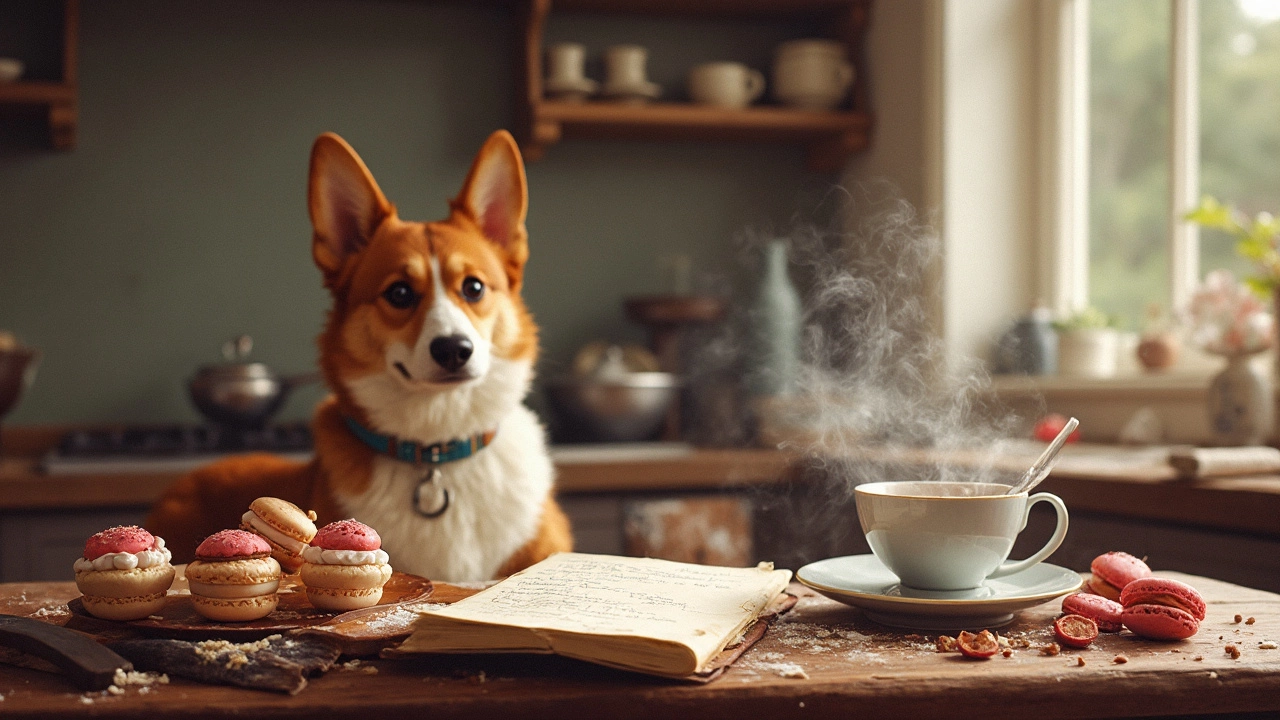
If you’ve ever walked by a pastry shop window and found yourself magnetically drawn to neat rows of delicate, pastel-colored cookies, you’re not alone. Macarons—those melt-in-your-mouth French sweets—aren’t just a treat. They’re practically edible art, and people have been obsessed for decades. But here’s something you might not know: in the land of croissants and éclairs, there’s fierce competition for the crown of macaron royalty. Who actually gets to be called the king of macarons? Is it about flavor, technique, or just sheer fame?
The Legend and Myth of Macaron Royalty
Ask any French pastry lover and you’ll instantly hear one name whispered with genuine awe: Pierre Hermé. This guy isn’t just another chef; he’s the Picasso of patisserie. Pierre Hermé completely changed the macaron game back in the late 1990s and early 2000s when he started experimenting with bold flavor pairings, like rose and lychee, or passion fruit with milk chocolate. Before Hermé, macarons mostly stuck to the classics—think chocolate, pistachio, raspberry. He dared to mix olive oil with vanilla, or pair wasabi with grapefruit. The result? Everyone else in Paris started doing double takes. According to the New York Times, Hermé’s boutique at 72 Rue Bonaparte in Paris sees more visitors every day than some museums. His work isn’t just about filling bellies; it’s about redefining what a macaron can be.
But let’s not forget Ladurée. They were the ones who popularized the modern version of the macaron—two shells sandwiched with creamy ganache—back in the 19th century. Their boxes, with their signature pastel colors, have become mini status symbols among foodies and Instagrammers alike. At one point, reports showed Ladurée selling about 15,000 macarons a day at just one Paris location. Still, if we’re talking pure influence, Hermé keeps the crown. Even his nickname in the French press is "le roi des macarons"—the king of macarons.
It might look like a two-horse race, Ladurée versus Hermé, but there are plenty of new contenders every year. Names like Sadaharu Aoki, with his Japanese twist, or Maison Pichard, which took home the 2023 Paris macaron championship, prove there’s still fresh competition. But in the court of dessert obsession, it’s Pierre Hermé who keeps wearing that bejeweled (sugar-based, perhaps) crown. He writes the rules, and everybody else is just playing catch-up.
What Makes the Perfect Macaron?
Every macaron lover has tasted disappointment: cracked shells, hollow tops, too-sweet fillings. Those who’ve actually tried baking them know the heartbreak is real—the process is like a chemistry lesson gone sideways. The most coveted quality is something called the "macaronnage," or that elusive moment when the batter is glossy, flows in sweet, gentle ribbons, and settles flat. Some experts say you have about a 15-second window; miss it, and the result is a cookie with the texture of a hockey puck or a sticky mess.
Let’s dig into the data. A 2023 survey conducted by the Association of French Pastry Chefs found that 71% of respondents believe shell texture is the most critical factor—smooth, shiny, and with the trademark “feet” (that little frill around the bottom). Fillings matter, too. Pierre Hermé’s team reportedly uses over 30% more almond flour per batch than most traditional recipes to get that perfect chewiness. Temperature matters just as much as technique. In Hermé’s kitchens, shells rest in temperature-controlled rooms for exactly 30 minutes to ensure optimal rise. Seasoned bakers will tell you, even a single degree difference in oven temp can nudge a perfect shell into the danger zone.
With macarons, flavor balance is everything. Not too sweet, never dull. Hermé’s “Ispahan” (rose, lychee, raspberry) pushes boundaries, but it’s still about how flavors work together—nothing should overpower, and every bite should feel like a little symphony. If you want to channel Hermé at home, here’s a quick cheat sheet:
- Sift your almond flour and powdered sugar at least twice—lumps kill that signature smooth look.
- Some chefs use aged egg whites (left out a day or two) for more stable meringue.
- Always let piped shells sit for 20-40 minutes before baking—skin formation is key for “feet.”
- Bake on a double-stacked tray. This buffers the heat and prevents cracking.
If you browse #macaronfail on Instagram, you’ll see heartbreak and humor in equal doses. But nailing a batch isn’t magic; it’s persistence, precision, and a bit of madness.

Fascinating Macaron Facts You Should Know
Did you know macarons didn’t even start out as sandwich cookies? The earliest versions, brought by Italian chefs to France in the 16th century, were just single little almond meringues. History credits Queen Catherine de' Medici for bringing them over for her wedding when she married King Henry II. Fast-forward to Ladurée in the 1930s: they had the wild idea to add fillings, making the treat as we know it today. That double-decker structure spread like wildfire across Paris.
Peek at macaron sales and you’ll see their global appeal. The French macaron market was estimated at over $400 million in annual sales in 2024, with exports to more than 60 countries. Tokyo even hosts a "Macaron Day", with local patisseries riffing on matcha, yuzu, and black sesame flavors. Pierre Hermé himself was crowned "World’s Best Pastry Chef" by The World’s 50 Best in 2016, and he opened stores as far as Dubai and Seoul. The "Hermé effect" isn’t just about glitz—it’s about elevating the humble cookie to international stardom.
And the colors? There’s actually some science behind them. A 2022 taste study by French food publishing house Saveurs found people associated pink macarons with “delicate” flavors (rose, raspberry), while green shells were perceived as “complex” (pistachio, matcha). Bakeries plan their displays using color psychology—after all, people eat with their eyes first! Some even claim flavor expectations can change based on color alone, and bakers like Hermé use this trick to surprise you on purpose.
The world record for the largest macaron was set in 2015, clocking in at 220 pounds. It took a team of 10 to make and reportedly tasted just as good as the regular guys. Collectors often pay upwards of $150 for limited-edition boxes, sometimes just to display on a shelf. People camp out overnight for Pierre Hermé’s seasonal specials, and he’s credited with inventing over 120 original macaron flavors. So if you ever find someone waxing poetic about a single bite, yes—these sweets are just that serious.
Secrets to Enjoying (and Baking) Macarons Like a Pro
Enough about legends; how do you get more out of your macarons, whether you’re buying or baking? For starters, fresh is best. Macarons reach peak flavor about 24 hours after being made, when the filling softens the shells just enough. At Pierre Hermé’s shops, staff will even ask if you want macarons “for now” or “for later,” recommending you let them sit if you want the full experience. If you’re picking them up at a store, look for shells free of cracks, with sharp, dry feet, and a smooth, unblemished top.
Storage matters, too. Temperature swings cause heartbreak: refrigerate your macarons in an airtight container, take them out ten minutes before eating. Never freeze already-filled macarons unless you’re fine with losing texture. And don’t underestimate flavor combos. Try making your own with a simple buttercream and flavor extract, or even a chocolate ganache (which has less moisture, so won’t make the shells soggy). To channel the king of macarons himself, start with classics like vanilla, lemon, or dark chocolate before venturing into floral or herbal territory—balance is always the goal.
Curious which flavors get the most love? Here’s a quick data snapshot from a Parisian trend report in early 2025:
| Flavor | Popularity Rank |
|---|---|
| Raspberry | 1 |
| Pistachio | 2 |
| Chocolate | 3 |
| Rose | 4 |
| Lemon | 5 |
| Salted Caramel | 6 |
And for baking, don’t stress over every little imperfection. Even Pierre Hermé admits he’s had plenty of baking disasters. What makes him the king of macarons isn’t perfection every time—it’s curiosity, experimentation, and a sort of joy you can taste in every bite. The next time you bite into a chewy, slightly crisp macaron, think about the hands and stories behind it. Maybe you’ll surprise yourself and bake up a batch worthy of royalty. If not, there’s always Paris—or the nearest bakery with their own crown-worthy creations. Life’s just better with a little macaron magic.